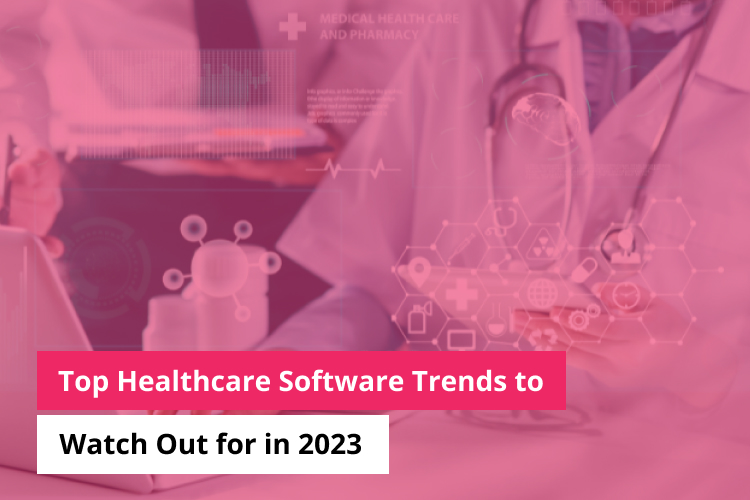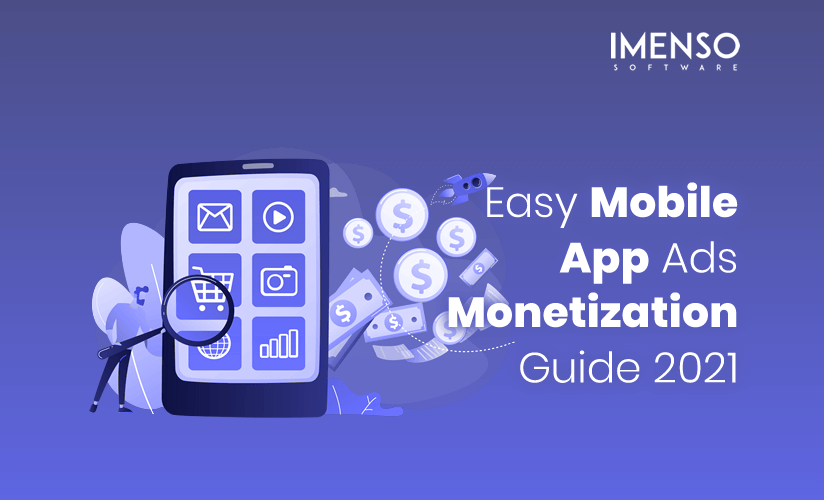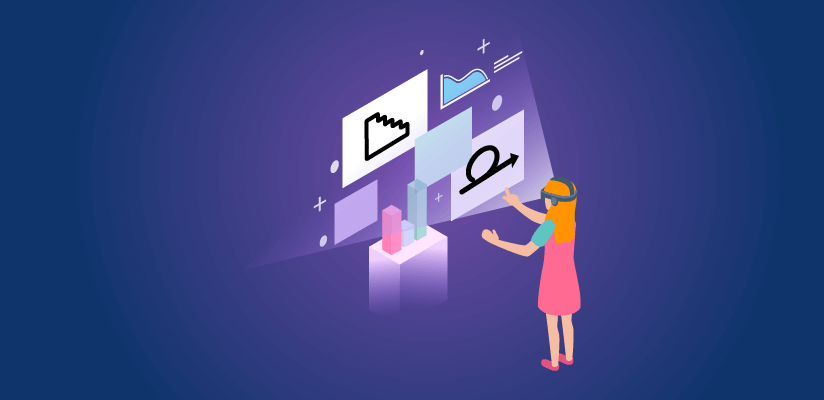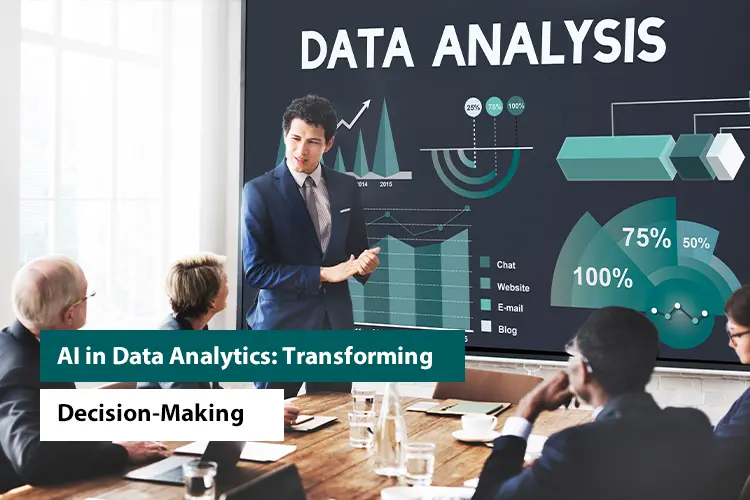Top Healthcare Software Trends to Watch Out for in 2023

Who would have imagined that telemedicine, formerly regarded to be nearly unachievable, might finally become a reality? Yet it has!
To stay up with the most recent trends and advancements, the healthcare sector is quickly adapting as technology advances. While many new technologies and solutions powered by Artificial Intelligence (AI) and biomedical engineering will be coming up, the focus will also shift to physical and mental well-being.
According to a report by ResearchAndMarkets, the global healthcare IT market is expected to grow from USD 141.3 billion in 2020 to USD 270.3 billion by 2026, at a CAGR of 11.7% during the forecast period. The report also identifies several key healthcare software trends, including the use of AI, telemedicine, mobile health (mHealth) apps, and electronic health records (EHRs).
As we move into 2023, healthcare software trends are set to continue to shape the industry, bringing new opportunities for improved patient outcomes, increased efficiency, and reduced healthcare costs.
In this blog, we’ll explore the top healthcare software trends to watch out for in 2023, including AI-powered diagnostics, virtual reality, mobile health apps, electronic health records, blockchain, cloud-based solutions, wearable technology, personalized medicine, and telemedicine. Stay get started!
AI-Powered Diagnostics:
 AI-powered diagnostics is one of the most significant healthcare software trends to watch out for in 2023. The use of artificial intelligence (AI) in healthcare has been gaining momentum in recent years, with the development of advanced algorithms and machine learning (ML) models that can analyze vast amounts of data and provide accurate diagnoses.
AI-powered diagnostics is one of the most significant healthcare software trends to watch out for in 2023. The use of artificial intelligence (AI) in healthcare has been gaining momentum in recent years, with the development of advanced algorithms and machine learning (ML) models that can analyze vast amounts of data and provide accurate diagnoses.
AI-powered diagnostics can assist medical professionals in providing better patient care by making diagnoses more quickly and accurately, lowering the chance of a misdiagnosis, and enhancing the effectiveness of treatments. AI can analyze a wide range of data, including medical images, patient data, and electronic health records (EHRs), and provide insights that can help physicians to make more informed decisions.
For example, AI-powered diagnostic tools can be used to analyze medical images, such as X-rays and MRIs, and provide accurate diagnoses for conditions such as cancer, heart disease, and neurological disorders. AI can also be used to analyze patient data, such as medical history, symptoms, and lab results, and provide personalized treatment plans based on the individual’s health status.
By obviating the need for several tests, treatments, and appointments, AI-powered diagnostics can also assist in lowering healthcare expenses. Wait times can be decreased, patient outcomes can be improved, and the diagnostic process can be streamlined with AI.
Overall, AI-powered diagnostics is a significant healthcare software trend to watch out for in 2023 and beyond. As AI technology continues to advance, we can expect to see more advanced AI-powered diagnostic tools that can provide more accurate and personalized diagnoses, leading to better patient outcomes and a more efficient healthcare system.
Virtual Reality (VR) in Healthcare:
Virtual Reality (VR) is another healthcare software trend to watch out for in 2023. VR technology involves creating a virtual environment that can be viewed through a headset or other devices using computer-generated images or movies. In healthcare, VR technology is being used to improve patient care, medical training, and rehabilitation.
In healthcare, VR technology can be used to create immersive experiences for patients, such as virtual tours of hospitals or clinics, distraction therapy during medical procedures, and pain management. VR technology can also be used to simulate medical conditions, allowing healthcare providers to train and prepare for complex surgeries or other procedures.
Furthermore, VR technology may be applied in therapy sessions to aid patients in their recovery from illnesses, operations, or impairments. By simulating physical therapy exercises, for instance, VR technology enables patients to practice movements and activities in a secure setting.
VR technology can also be used to improve medical education by providing realistic simulations of medical procedures, allowing students to practice and gain experience before working with real patients. Patient safety can be enhanced and medical mistakes can be decreased as a result.
In addition, VR technology can be used to improve mental health by creating immersive experiences that can help patients overcome phobias, anxiety, and other mental health conditions.
VR technology is an emerging healthcare software trend that has the potential to revolutionize patient care, medical training, and rehabilitation. As VR technology continues to advance, we can expect to see more advanced VR applications in healthcare that provide better outcomes for patients and improve the efficiency of the healthcare system.
Mobile Health (mHealth) Apps:
The use of mobile health (mHealth) apps has been on the rise in recent years. Mobile Health (mHealth) apps are a significant healthcare software trend to watch out for in 2023. mHealth apps are software applications designed to run on mobile devices, such as smartphones and tablets, to provide healthcare-related services, information, and tools.
mHealth apps can provide a wide range of healthcare services, including remote patient monitoring, chronic disease management, medication tracking, and mental health support. These apps can help patients to manage their health more effectively by providing real-time feedback, reminders, and alerts.
For example, mHealth apps can be used to monitor blood pressure, blood glucose levels, heart rate, and other vital signs, providing patients with real-time information and allowing them to take proactive measures to manage their health. These apps can also be used to remind patients to take their medication on time, track their diet and exercise, and provide access to educational resources.
In addition, mHealth apps can help to improve patient engagement and communication with healthcare providers, allowing patients to easily communicate with their healthcare team, receive test results, and schedule appointments. By offering remote monitoring and assistance, mHealth applications can also help to save healthcare expenditures by lowering the need for emergency department visits and readmissions to the hospital.
mHealth apps are an important healthcare software trend to watch out for in 2023 and beyond. You must partner with a competent and experienced team of developers to start with your project, and reach out to Imenso software for the best software development process. As mobile technology continues to advance, we can expect to see more advanced mHealth apps that provide more personalized and effective healthcare services, leading to better patient outcomes and improved healthcare efficiency.
Electronic Health Records (EHRs):
Electronic Health Records (EHRs) are an essential healthcare software trend that has been gaining momentum in recent years. EHRs are digital records of patient’s health information, including medical history, diagnoses, medications, test results, and other relevant data.
EHRs can provide numerous benefits to patients and healthcare providers, including improved patient safety, better care coordination, and increased efficiency. EHRs can also help to reduce medical errors, provide better access to patient information, and facilitate communication between healthcare providers.
Furthermore, EHRs can help healthcare providers to analyze and identify health trends, which can help to improve population health outcomes. EHRs can also provide valuable data for medical research, clinical trials, and public health programs.
As technology continues to advance, we can expect to see more advanced EHR systems that provide better integration, interoperability, and accessibility, leading to better patient outcomes and improved healthcare efficiency.
Blockchain in Healthcare:
Blockchain technology can completely transform the healthcare sector by enabling secure and transparent data sharing and storage. According to a survey by Allied Market Research, the worldwide blockchain market for healthcare is predicted to reach USD 5.61 billion by 2026, growing at a CAGR of 63.0% over that time. The report identifies the need for secure and transparent data storage and sharing as a key factor driving the adoption of blockchain technology in healthcare.
Blockchain is a decentralized ledger that transparently and impenetrably secures the recording and verification of transactions and data. In healthcare, blockchain technology can be used to improve data privacy and security, streamline medical records management, and facilitate the secure sharing of patient information.
Blockchain can also enable secure and transparent tracking of pharmaceuticals, medical devices, and supplies, reducing the risk of counterfeit products and improving patient safety. It will transform healthcare by improving data accuracy, security, and interoperability.
Cloud-Based Healthcare Solutions:
Cloud computing has been making strides in the healthcare industry in recent years. Cloud-based healthcare solutions are a trend in healthcare software that offers a range of benefits for healthcare providers, patients, and other stakeholders. These solutions are built on cloud computing infrastructure, which allows healthcare organizations to store, manage, and process large amounts of data in a secure and accessible manner.
Cloud-based healthcare solutions can provide healthcare providers with greater flexibility and scalability, enabling them to access patient information and provide care from anywhere and at any time. These systems can also enhance medical collaboration, lowering mistakes and enhancing health outcomes.
For patients, cloud-based healthcare solutions can offer greater convenience and access to care, enabling them to access medical records, schedule appointments, and communicate with their healthcare providers from their mobile devices.
Moreover, by doing away with the need for pricey hardware and software as well as the hassle of managing and maintaining IT infrastructure, cloud-based healthcare solutions can aid in cost reduction.
Overall, cloud-based healthcare solutions are an important trend in healthcare software. It can help to improve the quality of care, enhance patient engagement, and drive greater efficiency in the healthcare industry with the help of top cloud-based healthcare solution providers like Imenso Software.
In 2023, we can expect to see more healthcare software solutions that use blockchain technology, such as secure patient data storage, secure medical device management, and more.
Wearable Technology:
The use of wearable technology in healthcare software is a new development that has the potential to revolutionize how healthcare is provided. Wearable devices, such as smartwatches, fitness trackers, and medical-grade devices, can monitor and track a wide range of health-related data, including heart rate, blood pressure, sleep patterns, and physical activity.
Wearable technology can provide patients with real-time feedback and insights into their health, enabling them to take proactive measures to manage their health more effectively. For healthcare providers, wearable technology can provide valuable data and insights into patient health, allowing them to monitor patients remotely, identify potential health issues, and provide more personalized care.
Moreover, wearable technology can help to improve patient engagement and compliance, by providing patients with real-time reminders, alerts, and encouragement to adhere to their treatment plans. By offering remote monitoring and assistance, wearable technology can also lower healthcare expenditures by lowering the need for hospital readmissions and ER visits.
Cybersecurity:
Cybersecurity is a critical aspect of healthcare software that cannot be overlooked. With the increasing use of digital technology in healthcare, including electronic health records, telemedicine, and medical devices, the risk of cyber threats and data breaches has become a significant concern.
Healthcare organizations must take proactive measures to safeguard patient data and protect against cyber threats, such as ransomware, phishing attacks, and other forms of cybercrime. This includes implementing robust security protocols, including firewalls, encryption, and access controls, as well as providing regular training for staff on cybersecurity best practices.
Moreover, healthcare organizations must comply with regulatory requirements, such as HIPAA and GDPR, to ensure the confidentiality, integrity, and availability of patient data. If you want to hire a team of experts that follows every security compliance and develops robust and secure software, get in touch with Imenso Software.
Personalized Medicine: 
Personalized medicine is an emerging trend in healthcare software that leverages patient data, including genetic information, to tailor medical treatment and care to the specific needs of individual patients. Improvements in patient outcomes, lower healthcare costs, and more patient satisfaction are just a few advantages of personalized medicine.
By using patient data to customize treatment plans, healthcare providers can deliver more targeted and effective treatments, reducing the risk of adverse reactions and improving patient outcomes.
Moreover, personalized medicine can help to reduce healthcare costs by avoiding unnecessary treatments and tests, as well as reducing hospital readmissions and emergency room visits.
By delivering more individualized and patient-centered treatment, personalized medicine also has the potential to increase patient participation and happiness.
Telemedicine:
Telemedicine is a rapidly growing trend in healthcare software that enables patients to receive medical care and consultation remotely, using digital technology such as video conferencing, messaging, and remote monitoring devices. Many advantages of telemedicine include better patient comfort, lower healthcare costs, and enhanced access to care.
Without having to leave their homes, patients may access healthcare through telemedicine without going to a hospital. Patients who live in rural or isolated places or have mobility challenges may find this to be very helpful.
Telemedicine can also help to reduce healthcare costs by reducing the need for hospital admissions and emergency room visits, as well as reducing the cost of healthcare delivery by eliminating the need for physical infrastructure.
Moreover, telemedicine can enhance patient outcomes by allowing medical professionals to watch patients from a distance and take quick action in the event of any medical problems.
Telemedicine is an important healthcare software trend to watch out for in 2023 and beyond. As technology develops, we may anticipate seeing increasingly advanced telemedicine options that give even greater advantages for both patients and healthcare professionals.
Wrapping it Up:
The healthcare software industry is evolving rapidly, and in 2023, we can expect to see more advanced healthcare software solutions that use emerging technologies such as AI, VR, blockchain, and more. Healthcare providers and software developers must stay up to date with these trends to provide better care to patients and stay ahead of the competition. If you have any more queries, contact the experts at Imenso Software and get a free estimate!
Similar Posts

Easy Mobile App Ads Monetization Guide 2021
Owning a mobile app is a legit revenue-generating successful business stream. According to Statista, by 2023 the mobile app market is expected to generate 935 billion U.S. dollars in revenues via paid downloads and in-app advertising. ...

Agile vs Waterfall software development Methodology
Any software development company has to decide about the methodology suited for their projects. There are two mighty and time tested choices, respectively as waterfall and agile software development methodology. To be precise, both are far from opposed to each other as antagonist opposites. But these two methodologies clearly shows the evolution of the software […]...

AI in Data Analytics: Transforming Decision-Making
Have you ever stopped to wonder just how much data is generated every single day? It’s an astronomical figure—over 2.5 quintillion bytes! Yes, you read that correctly. From social media posts to online transactions, from sensor readings to digital photos, the digital universe is expanding at an exponential rate, inundating organizations with a tsunami of […]...







